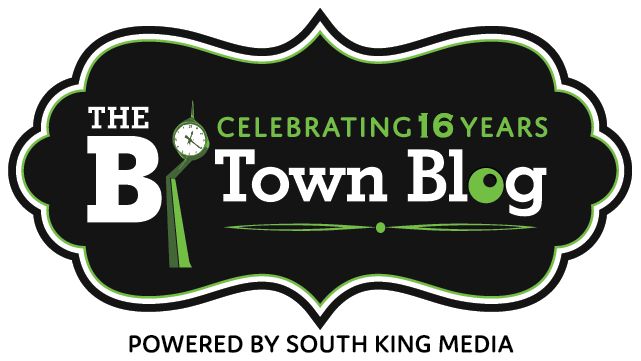 by Ralph Nichols
by Ralph Nichols
Part 2 of 4 parts
When environmental scientists spoke to Burien City Council members late this spring about protection of marine ecological functions along the Puget Sound shoreline, one thing was missing from the presentations.
No detailed assessment of waterfront conditions was given to council members because none of these consultants had made such an inventory by walking the length of the city’s five miles of saltwater beaches.
In the absence of such a baseline for use by the city council as it reviewed proposed revisions to the Burien Shoreline Master Program (SMP) this summer, Michael Noakes took matters into his own hands.
Noakes, who is president of the Burien Marine Homeowners Association, which was organized to represent the interests of waterfront residents along Puget Sound, and other volunteers from the group did just that.
Earlier this month, he presented their findings to the city council in a Memorandum Describing Existing Conditions of the Burien Marine Shoreline.
They “developed a detailed assessment of the Burien shoreline in which we have gathered factual information that is relevant to the City’s update of its SMP” and “is the result of hundreds of hours of work,” Noakes informed council members.
The city council will hold a public hearing, which will include citizen comments, on the draft revised SMP at 6 p.m. tonight (Monday, Aug. 30) at city hall. Final approval of the document is expected on Sept. 13.
Next, Burien’s new SMP will be sent to the state Department of Ecology, which will hold its own public hearing before accepting the document or sending it back to the city for additional changes.
Much of the discussion by council members, city staff, consultants and shoreline homeowners has focused on how to protect marine shoreline ecological functions, what constitutes a “net loss” of those functions, and whether an expanded 50-foot buffer plus a 15-foot setback should be required.
At its Aug. 16 meeting, the council voted 4-3 against adopting a staff proposal, which was recommended earlier by the Burien Planning Commission, to impose the 50/15 buffer and setback and to keep the existing 20-foot setback from the ordinary high-water mark.
“I would like to believe that our assessment makes a meaningful contribution to the evidence that there is not a need to introduce an expanded no-touch area in order to meet the no-net loss standard that is at the core of the updated SMP guidelines,” Noakes said.
“Based on remarks made by [Ecology] representatives at both of the public forum meetings in June, I would like to believe that [Ecology] will agree,” he told The B-Town Blog prior to the public hearing on Aug. 30.
Burien’s Puget Sound shoreline “is more fully developed than is suggested in the inventory prepared by Grette and Associates” for the city, Noakes advised the council in his introduction to the BMHA findings.
“Outside of Seahurst Park, the shoreline of Burien is almost as fully developed as the terrain will allow.”
Additional findings in the BMHA report include:
- Almost 85 percent of the privately owned land on Puget Sound within 65 feet of the ordinary high water park – the width of expanded buffer that was proposed – already has residential development (housing and accessory structures) on it.
- Nearly 75 percent of the homes on waterfront lots would be non-conforming had the expanded buffer been required.
- Less than 7 percent of this land is privately owned but undeveloped. “Most of this remaining area is judged to be unsuitable for new development due to naturally occurring constraints such as steep or unstable slopes.”
- “Privately owned waterfront properties are almost fully armored and the majority of these bulkheads experience significant wave energy for several hours every day.”
Wording in the draft SMP relating to the repair and replacement of existing bulkheads is another issue of concern for these homeowners, and is something that could be revisited by the council before it gives final approval to the document.
The report also noted that “Natural conditions are found primarily on unbuildable land” – in addition to Seahurst Park, where the city has removed bulkheads and is restoring beaches to their natural state.
“As a resident of Burien I am proud of the pristine nature of Seahurst Park and the opportunity it provides for residents to see and touch the Puget Sound shoreline,” Noakes told The B-Town Blog.
“I am pleased that our City intends to protect this area for the sake of generations to come.”
He added, “as stewards of the shoreline, we are interested in any science that provides insight on how the residents of Washington state can work together to protect our shorelines.
“Despite our efforts, we have not found any scientific evidence that expanding the riparian buffer in Burien’s marine shoreline from 20 feet to 50 feet will have any measurable impact on the ecological function of Puget Sound.”
Earlier, council members were told by fisheries biologist George Hadley of Cedarock Consultants Inc., who was retained by the BMHA, that “existing buffer science contrasts with existing conditions in Burien … Trying to improve habitat quality on developed lots using buffers just doesn’t work.”
No scientific evidence was subsequently presented that contradicted his evaluation.
Still to come: the private-property factor in the SMP discussion, and a look at the Lake Burien shoreline.
Previously posted (Aug. 30): were looks at “no net loss” and related shoreline environmental science.]]>

